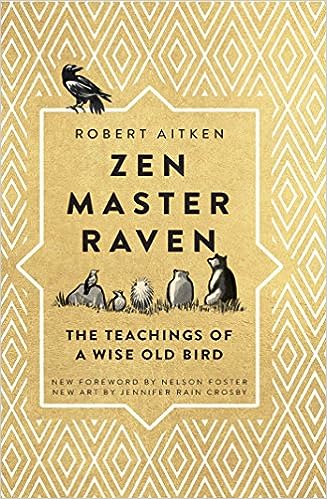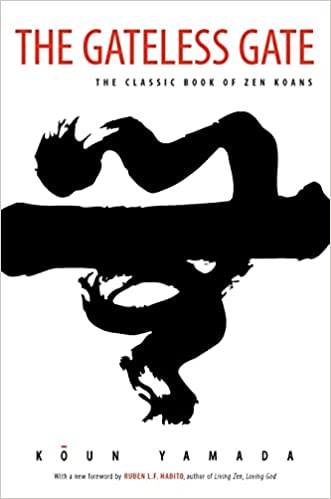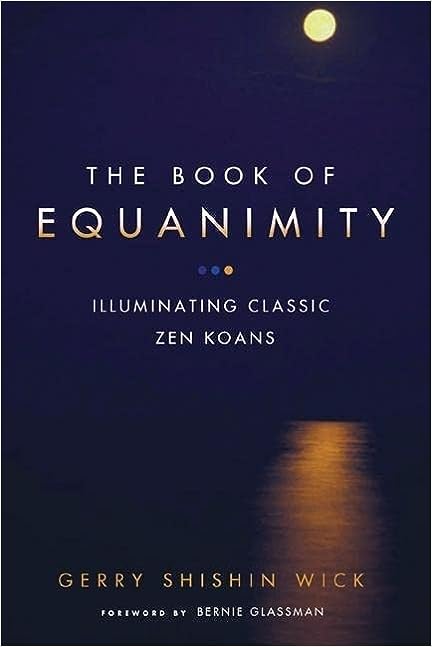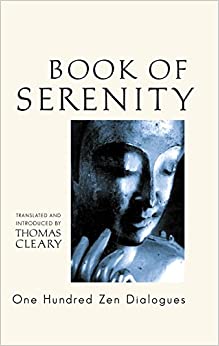Zen Master Raven: The Teachings of a Wise Old Bird. Compiled and annotated by Robert Aitken. Illustrated by Jennifer Rain Crosby. Foreword by Nelson Foster. Wisdom, 2002, 2017, 229 pages. VSCL, Hardbound. 183 Brief Koans.
Most koans feature Master Raven giving anwers or comments, and asking follow up questions; therefore, I chose to use the character Master Raven is talking to for the Student/Learner under the index heading of "Master, Teacher." Otherwise, nearly all 183 koans would be listed under Master Raven. Just automatically assume the central teacher in nearly all these koans is Zen Master Raven.
Subject Index to Zen Master Raven's 183 Koans Collection. PDF, November 21, 2023, 28 pages.
Case Titles Index to Zen Master Raven's 183 Koans Collection. PDF, November 21, 2023, 7 pages.
Case Number Index to Zen Master Raven's 183 Koans Collection. PDF, November 21, 2023, 7 pages.
Animals and Responders Index to Zen Master Raven's 183 Koans Collection. PDF, November 21, 2023, 7 pages.
Subject Index to 1,975 Zen Buddhist Koans
Keys to Zen Buddhist Koans Database Collection
Taking the Path of Zen. By Robert Aitken. North Point Press, 1982, 149 pages.
The Gateless Barrier: The Wu-Men Kuan (Mumonkan). Translated with commentary by Robert Aitken. North Point Press, 1991, 325 pages.
Zen Master Raven. Meredith Gammon Hotetsu's Zen Blog. 183 Cases "Each post is a chapter of Robert Aitken's Zen Master Raven, with an introduction and verse by Meredith Hotetsu Garmon."
"A uniquely playful and incisive collection of Zen teaching stories from a beloved American master. A modern classic, now in a new expanded edition. In the tradition of the great koan collections and the records of ancient masters, Robert Aitken distills a lifetime of teaching down to its essence. Intriguing and deceptively simple, Zen Master Raven is a brilliant encapsulation of Zen in over a hundred koan-like encounters alongside many charming illustrations. Featuring curious beginners like Mallard and Mole and profound teachers like Brown Bear, Moose Roshi, and Zen Master Raven himself, this classic of contemporary Zen and will inspire seekers for generations to come." - Amazon
Zen Master Raven by Robert Aitken. PDF, 2010 Pages. Terebess Bootlegged Copy? Likely an unauthorized bootleg!
"In the tradition of the great koan collections and the records of ancient masters, Robert Aitken distills a lifetime of teaching down to its essence. Intriguing and deceptively simple, Zen Master Raven is a brilliant encapsulation of Zen in over a hundred koan-like encounters alongside many charming illustrations. Featuring curious beginners like Mallard and Mole and profound teachers like Brown Bear, Moose Roshi, and Zen Master Raven himself, this classic of contemporary Zen and will inspire seekers for generations to come." - Review
The Journey: Big Panda and Tiny Dragon. By James Norbury. Illustrated by James Norbury.
Big Panda and Tiny Dragon. By James Norbury. Illustrated by James Norbury.
The Boy, the Mole, the Fox, and the Horse. By Charlie Mckesy. Illustrated.
The Complete Tales of Willie-the-Pooh. By A. A. Milne. Illustrations by Ernest H. Shepard.
The Tao of Pooh and Te of Piglet. By Benjamin Hoff.
Vegetable Roots Discourse: Wisdom from Ming China on Life and Living. By Hong Zicheng. Translated with notes by Robert Aitken. Counterpoint, 2007, 240 pages. "Written 400 years ago by a scholar in the Ming Dynasty, one hundred years after Columbus and around the time Shakespeare completed Henry VI, accomplished scholar and philosopher Hong Zicheng retired from public life and settled down to write an informal compilation of his thoughts on the essence of life, human nature, and heaven and earth. Though he wrote other books as well, only this one has survived—thanks largely to its continuous popularity, first in China and later in Japan and Korea. Entitled Caigentan (Vegetable Roots Discourse), this book has been studied and cherished for four hundred years. Terse, humorous, witty, and. above all, timely, this book offers a provocative and personal mix of Daoist, Buddhist, and Confucian understanding. It contains 360 observations that lead us through paths as complex, absurd, and grotesque as life itself. While it has been translated into many languages, this comprehensive version will immediately become the standard edition for generations of English readers to come.es."
Buddhism: Bibliography, Links, Information, Resources. Compiled by Michael P. Garofalo.

![]()









